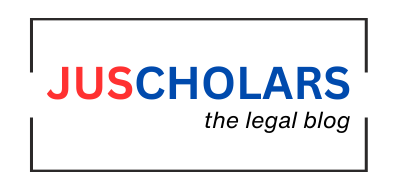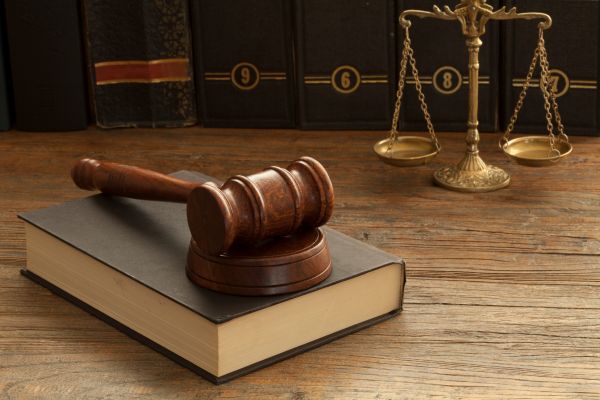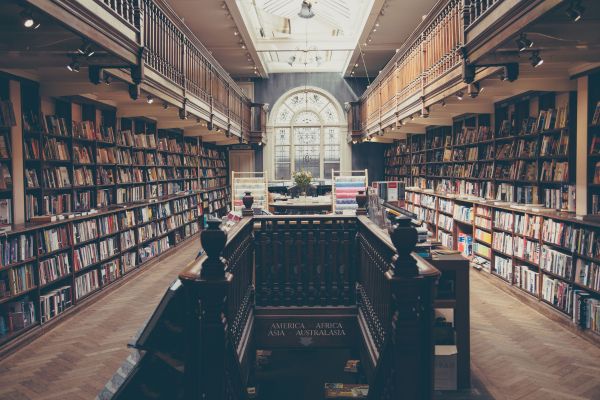The internet has become a global platform for the exchange of ideas, ideologies, and information. In the digital age, it has enabled individuals to express themselves and connect with people around the world. Online speech and expression play an important role in the upholding of the democratic right of freedom of speech and expression. It allows individuals to share opinions and challenge any decision by the authority, enabling a proper system of checks and balances. Social media platforms have changed the perspective of the public by making everything available at their fingertips, giving unlimited access to information. However, the increase in online expression has led to debates and discussions on its boundaries, specifically when it contradicts issues like hate speech, misinformation, and censorship.
Balancing the right to free speech and the protection of society from harm has become a challenge. The internet provides a powerful opportunity for activism, but it raises questions about the consequences of unrestricted expression. This essay examines the complexities of free speech over the internet, the use of social media as a tool for activism, and the challenges posed by censorship, in this digital era.
Social media as a tool for activism
Social media is a tool that helps in the transfer of ideas, ideologies, and information and is a prevalent way of communication to develop the dissemination of information and interaction with people. It brings awareness among the public and also changes perceptions of the public. As mentioned in the theories of free speech, the truth will come out only when people debate and discuss. So there is a pressing need for a platform for the people to openly debate and discuss. From the time when people used to wait for the daily newspaper for some type of information to the digital era where the whole world is available to the public at their fingertips, the importance of social media as a tool for activism is of utmost importance. For every infringement happening towards the public, there is a medium through which the public can raise efforts to direct, promote, or impede any social, political, or environmental change.[1]
Social media acts as a platform for people to share their messages and experiences with the public, which will otherwise go unheard. The shift from traditional media outlets, like newspapers and the press, to digital media and resources has enhanced the citizen’s right to freedom of speech and expression more conveniently media has also led to raising awareness in certain aspects of some of the most important social issues.
Movements like the #Metoo movement have spread awareness about the ongoing sexual assault happening against women at their workplace and also encouraged them to share their stories and experiences and to provide support for the survivors. The #BlackLivesMatter movement advocated for an end to racism. It got global recognition after the death of a black man, George Floyd, who was brutally murdered by a police officer.[2]
Social media breaks all the geographical barriers, allowing activists to connect globally to share strategies and experiences of successful models of protests for various changes in society. It has made activism more accessible and immediate.
Social media in recent years has been used as a tool for democracy in widening people’s participation, enabling marginalized groups and voices to be heard and communicated across geographical boundaries. In this sense, it offers more political opportunities and participation by providing channels to bypass the traditional media and boundaries, thus ensuring more people get engaged in social and political movements. The Iranian post-election demonstrations in 2009 and the Arab Spring are a few examples of social media used as a tool for political activism, where platforms like Twitter and Facebook were used for the facilitation of communication and mobilization among large gatherings. This sheer volume of usage of social media in political and social approaches indicates the growth of social media as a global tool of activism, especially in regions with limited press freedom.
The ruling governments in countries such as China, Iran, and Tunisia are known for their extensive control over Internet communications. These countries have made huge investments in systematic censorship, filtering keywords, blocking certain international websites and apps, and also using denial-of-service attacks against opposition groups. However, despite efforts, social and political activists find ways to use digital platforms to share real-time information and criticisms of the government by generating new tactics. Social media now acts as a needed tool to address the atomized structure of contemporary movements, providing new forms of participation in support of social and political dynamics.
Free Speech v. Hate speech
Free speech is a moral right of any person to freedom of expression, which acts as a tool to freely express themselves and communicate with others. This right generates both negative duties and positive duties on the part of other agents and the government, respectively. People communicate with others to share and discuss about matters on which they have opinions.[3] It upholds the democratic process by allowing people to share ideas, debate and express dissent without fear. People’s faith and beliefs are interconnected with their right to express themselves freely. So, without free thoughts to express free speech, it wouldn’t be possible to practice.
This is the foundation for all other rights and freedoms. According to J.S. Mill, even unpopular opinions must be provided with room in a democracy, as silencing such voices would be unjust. Free speech is a platform that is essential for promoting diverse views, even if they are unpopular, until or unless they don’t harm or cause violence to people[4].
The right to freedom of speech and expression is provided by Article 19(1)(a) of the Indian Constitution, which grants Indian citizens the free speech and expression of their thoughts as a fundamental right, but it isn’t absolute. Under Article 19(2), the state can impose reasonable restrictions on certain cases to maintain the balance between individual freedom and social security.[5] This means that imposing limits on freedom of speech and expression would restrict intellectual and emotional freedom, which is the very foundation of individual rights and beliefs in society.
In Maneka Gandhi v. Union of India, the Supreme Court of India quoted the interpretation of Article 21 (right to life and personal liberty) to include the considerations of Articles 14 and 19 of the Constitution. This case widened the scope of individual rights by interconnecting freedom of speech with fundamental liberties and ensuring the restrictions on speech must adhere to broader constitutional safeguards.[6]
Hate speech is when it targets individuals or groups based on their identity attributes, which erodes the social fabric of the country. The United Nations defines hate speech as any kind of communication in speech, writing, or behaviour that attacks or uses pejorative or discriminatory language concerning a person or a group based on who they are, in other words, based on their religion, ethnicity, nationality, race, colour, descent, gender, or other identity factor. Hate speech not only plants division but also contributes to social conflicts by increasing these perceived differences.[7] People, due to circumstances, take a certain pride in their ethnicity, identity, or practice, which can be weaponized to establish against others, and these habits for superiority may influence individuals to engage in hate speech by undermining the values of equality and respect. Even though Indian laws lack to define hate speech, it can be understood as speech that violates the norms of civilized society.
In recent times, with the development of online communication platforms, which has made the process of discussion and communication wider and easier for all the common people, there has also been an increase in hate speech on online platforms, which is visible, as demonstrated by Facebook’s removal of 3 million hate posts and YouTube’s takedown of almost 25,000 videos in a month, points out the need for regulating online hate speech.[8] These numbers represent only limited portions of larger social issues that are carried on by social media, as this pervasive nature of hate speech online contributes to social division and conflicts on a large scale, particularly in India, where communal tensions have been aggravated by online divisiveness and hate speech[9].
These inflammatory speeches have caused communal riots and mob violence on a larger scale, making hate speech transform from mere verbal abuse into a catalyst for violence and social division. With the arrival and expansion of digital or online platform usage among the common public, the definition of hate speech has expanded to include speech that incites violence, provokes hostility, or promotes discrimination against specific groups. Hate speech causes social instability and harm towards social peace that undermines efforts toward harmony in the community.
Hate speech has both tangible and intangible effects on individuals and society. According to Jeremy Waldron, hate speech causes a deep emotional and psychological impact on the victims, leading them to feel often fearful, avoid public spaces, and may withdraw from any public participation. The Law Commission of India in the year 2017 recommended certain provisions to criminalize incitement towards violence, identifying the dangerous impacts that hate speech has on society. The foundation for this is to make speech that incites violence punishable under the law to maintain public order and safety. The Information Technology Act of 2000 and certain sections of the Indian Penal Code are examples of legal overreach, where laws were used to limit free speech[11]. Even though these laws were made with the motive to regulate hate speech in certain cases, they make overcriminalization of speech and expression.
In the case of Indian author Perumal Murugan, his novel, based on sensitive cultural and religious themes, was a backlash by certain religious and caste-based groups, forcing the author to leave his home, withdraw his books, and apologise to the public. In the year 2016, the Madras High Court upheld Author Murugan’s right to freedom of speech and expression, dismissing all the allegations made on religious grounds[12]. Over-criminalization causes more harm than actual regulation Legal scholar Sanford Kardish states that rather than using excessive use of criminal law to control behavior, there can be amendments to public policy for better administration. Due to the presence of certain laws that are vague and overbroad, causes chilling effects on free speech, where individuals and authors like Murugan may self-censor out of fear of legal consequences such as overcriminalization, where this vague nature causes even critical speech to be criminalized and undermines the principle of proportionality, where restrictions on speech should be the least restrictive necessity to achieve public order.
With the increase in usage of online platforms and strict regulation policies, over-criminalization is a leading debate inciting that criminal law shouldn’t be the primary tool for regulating speech. So, there is a need for legal frameworks to prioritize alternative and less restrictive sanctions that protect the public order and also maintain the freedom of speech and expression. In significant rulings such as Shreya Singhal v. Union of India and Anuradha Bhasin v. Union of India, the Supreme Court played a major role in protecting individual rights by striking down certain overcriminalization Indian legal provisions[13]. In Shreya Singhal, the Supreme Court struck down Section 66A of the IT Act, 2000, which was deemed unconstitutional for violation of free speech, and the court clarified free speech can only be limited or restricted if it leads to incitement of violence or public order, establishing the difference between advocacy and incitement.[14]
Impact of censorship on digital expression
Censorship involves the suppression of speech, public communication, or information deemed objectionable, harmful, sensitive, or inconvenient. It is often implemented to control the flow of information and shield governments or ruling powers from criticism[15]. This form of systematic control affects various communication mediums, such as print and broadcast media, through different methods like prior restraint, selective enforcement, or arbitrary restrictions. As a tool intertwined with power, censorship limits the freedom of the press and restricts its ability to report and publish information freely.
The Central Board of Film Certification is a statutory body under the Ministry of Information and Broadcasting for regulating the content disseminated to the public.[16] The main task of the body is the public exhibition of films under the Cinematograph Act. The censor board assigns certifications to films, television shows, television ads, and publications for exhibition sale and hire in India.
A committee was formed to review the functioning of the censor board in 1968. The committee found out that the existing guidelines are not reflective of the norms and ideologies of contemporary society. The committee also highlighted the need for guidelines to evolve the changing societal standards.
The first issue regarding the censor board’s censorship of films was raised by K. A. Abbas, who was a filmmaker, who challenged the constitutional validity of censorship of films under the Indian Cinematograph Act. He argued that the provision violates Article 19 (1), which guarantees the right to freedom of speech and expression. The Court held that censorship of films was not unconstitutional. It distinguished films from other forms of expression, like newspapers and books, emphasizing that films can have a more lasting impact on audiences due to their audiovisual nature.[17] Therefore, films could be subject to stricter scrutiny and reasonable restrictions under Article 19(2).
Censoring online data involves restricting digital material that is inappropriate or harmful for dissemination to the public. The Information Technology Act contains certain provisions for the censoring of online content.
Power to issue directions for blocking public access to any information through any
computer resource.
Section 69A authorizes the government to block any content from being accessed by the public on various grounds. For example, the TikTok Mobile App was banned, among many other mobile applications, in India by the Central Government under section 69A[18]
Section 79. Exemption from liability of intermediary in certain cases
As long as they are only making the information accessible, intermediaries are not responsible for any content or activities of third parties.
Censorship of online media has certain impacts on individuals and society. Censorship creates a feeling of fear in the minds of people due to the repercussions they should face if any content is illicit. Individuals self-censor their thoughts. This can be understood by taking social media as an example. Users refrain from expressing their use and opinions on controversial topics to avoid being harassed or banned; it leads to the suppression of diverse viewpoints. Social media companies filter out content that is harmful to their businesses, which in turn limits diversity in viewpoints. This suppression of free speech and expression can lead to a decrease in support for social issues.[19]
Censorship targets dissenting voices specifically, which are critical to the government or powerful entities. Journalists are vulnerable to censorship; there are various examples where legal actions have been faced by journalists for reporting sensitive issues.
Ambiguity in law related to hate speech and defamation increases fear and uncertainty in the minds of people about what constitutes free speech and expression[20]
Cyberbullying and online harassment
Cyberbullying is willful harm done through electronic media. It consists of repeated behaviour, distinguishing it from isolated incidents of online harassment. The case of communication in online mediums increases harassment.[21] Research shows that adolescent girls are more affected by cyberbullying. This gendered aspect of online harassment depicts the non-inclusivity of online spaces and the need for protective measures that do not infringe on free speech. There should be a balance between the right to free speech and the need to protect individuals from harm. [22]The freedom to express should not come at the expense of other’s safety and effective policies shall be made to address these issues
The Indian legal landscape regarding cyberbullying lacks a comprehensive legal framework to address this issue. There are certain provisions in the IPC and IT Act dealing with cyberbullying. Despite these provisions, India’s IT Act lacks certain laws for cyberbullying.
Section 66A dealing with offensive messages was struck down by the Supreme Court in 2015 in the case of Shreya Singhal versus Union of India, making a gap in the regulatory framework. The Blue Whale Challenge, which caused several deaths, brought attention to the dangers of non-regulated online spaces.[23]
Conclusion
In conclusion, the right to free speech and expression enshrined in Article 19 of the Indian Constitution remains the foundation and cornerstone of democracy across all mediums of communication. The technological developments in recent eras marked a significant shift towards online communication to share, debate, criticize, and uncover the truth, thus contributing to effective transparency and accountability of government actions. However, in this age of digital communication, there lies the barrier to distinguishing the line between protecting this freedom and restricting harmful speech and expression that has increased in online media.
In a pluralist society like India, it is very important to respect and hear all the voices across diverse communities by ensuring no one gets silenced, and this has become successful with an increase in the usage of online communication platforms among Indian citizens. Every issue or problem from Kashmir to Kanyakumari and Surat to Shillong is discussed, shared, and communicated online by the exercise of free speech and expression. These online platforms are more effective and quicker than traditional media, as the current news comes up in the top chart and becomes trending before it gets published in any traditional media.
Online platforms have provided the general public with the power to question and criticize government policies and actions, but when such incites violence, the legal framework has the authority to quash such speech. While criminalizing hate speech may be seen as an effective solution, it often leads to infringing the very freedom that it seeks to protect. Instead, adopting alternative approaches such as counterspeech, educational initiatives, and media literacy can help society critically think and stay aware of their rights and duties.
[1]Ayesha Karamat & Ayesha Farooq, *Emerging Role of Social Media in Political Activism: Perceptions and Practices*, 31 S. Asian Stud. 381 (2016).
[2]A. Lampinen, *Tweeting for Change: How Twitter Users Practice Hashtag Activism through #BlackLivesMatter and #MeToo* (2020), https://oulurepo.oulu.fi/handle/10024/15514.
[3] Samarth Mishra & Aditya Kumar Shukla, Balancing Freedom of Expression and Hate Speech: Case of India, (2024).
[4]Howard, Jeffrey W. Free Speech and Hate Speech. Annu. Rev. Political Sci. 2019. 22
–X. https://doi.org/10.1146/annurev-polisci-051517-012343.
[5] Constitution of India art. 19.
[6] Maneka Gandhi v. Union of India, (1978) 1 SCC 248, 255 (India).
[7] Kumar, Dr. Ravinder, et al. The Dark Side of Free Speech: Hate Speech in India. NeuroQuantology Dec. 2022, vol. 20, no. 12, pp. 4152–4161, doi:10.48047/NQ.2022.20.12.NQ77742.
[8] Yadav, Anandita. Countering Hate Speech in India: Looking for Answers Beyond the Law. ILI Law Review Winter 2018, vol. II
[9] Gadgala, Neha. Freedom of Speech and Expression Versus Hate Speech in India: A Critical Analysis. Int’l J. Research Anal. Rev. May 2024, vol. 11, no. 2, pp. 118. (E-ISSN 2348-1269, P-ISSN 2349-5138).
[10] Gautam Bhatia, Offend, Shock, or Disturb: Free Speech under the Indian Constitution 22(2) (Oxford University Press 2016).
[11] Information Technology Act of 2000.
[12] Perumal Murugan v. State of Tamil Nadu, (2016) 6 MLJ 228 (India).
[13] Anuradha Bhasin v. Union of India, (2020) 3 SCC 637 (India).
[14] Shreya Singhal v. Union of India, (2015) 5 SCC 1 (India).
[15] B. Oręziak, *Censorship on Digital Platforms and Social Media Versus Freedom of Expression and Pluralism: The Perspective of the Republic of Poland* (2021), https://real.mtak.hu/134574/1/The%20Impact%20of%20Digital%20Platforms%20and%20Social%20Media%20-%20Chapter%202%20-%20Or%C4%99ziak.pdf.
[16] Central Board of Film Certification, *Vision and Mission*, https://cbfcindia.gov.in/cbfcAdmin/vision-and-mission.php.
[17]K. A. Abbas v. Union of India, 1971 A.I.R. 481.
[18]Information Technology Act of 2000.
[19]BF Jackson, ‘Censorship and Freedom of Expression in the Age of Facebook’, 44 NML Rev. 1 (2014), available at https://heinonline.org/hol-cgi-bin/get_pdf.cgi?handle=hein.journals/nmlr44§ion=8.
[20] M. Manogna, T. Sarkar, G. Grover, & K. Khanna, ‘Censorship: Threats to Digital Expression’, available at https://www.icnl.org/wp-content/uploads/3.-Online-censorship-India-report.pdf.
[21]D.L. Hudson Jr., ‘Cyberbullying and Freedom of Speech’, 50 NML Rev. (2020), available at https://heinonline.org/hol-cgi-bin/get_pdf.cgi?handle=hein.journals/nmlr50§ion=18
[22]:R.R. Calvoz, B.W. Davis & M.A. Gooden, ‘Cyber Bullying and Free Speech: Striking an Age-Appropriate Balance’, 61 Clev. St. L. Rev. 373 (2013), available at <https://heinonline.org/hol-cgi-bin/get_pdf.cgi?handle=hein.journals/clevslr61§ion=16>.
[23]R. Chandra, ‘Cyber Bullying and Indian Legal Regime: An Overview’, 19 Asian Pac. L. & Pol’y Rev. 1 (2018), available at https://www.academia.edu/download/57639955/July_18_-_CYBERBULLYING_AND_INDIAN_LEGAL_REGIME_AN_OVERVIEW.pdf.
Author: Sharan M and Merlin Ann Varghese are students of CHRIST Deemed to be University, DELHI-NCR






